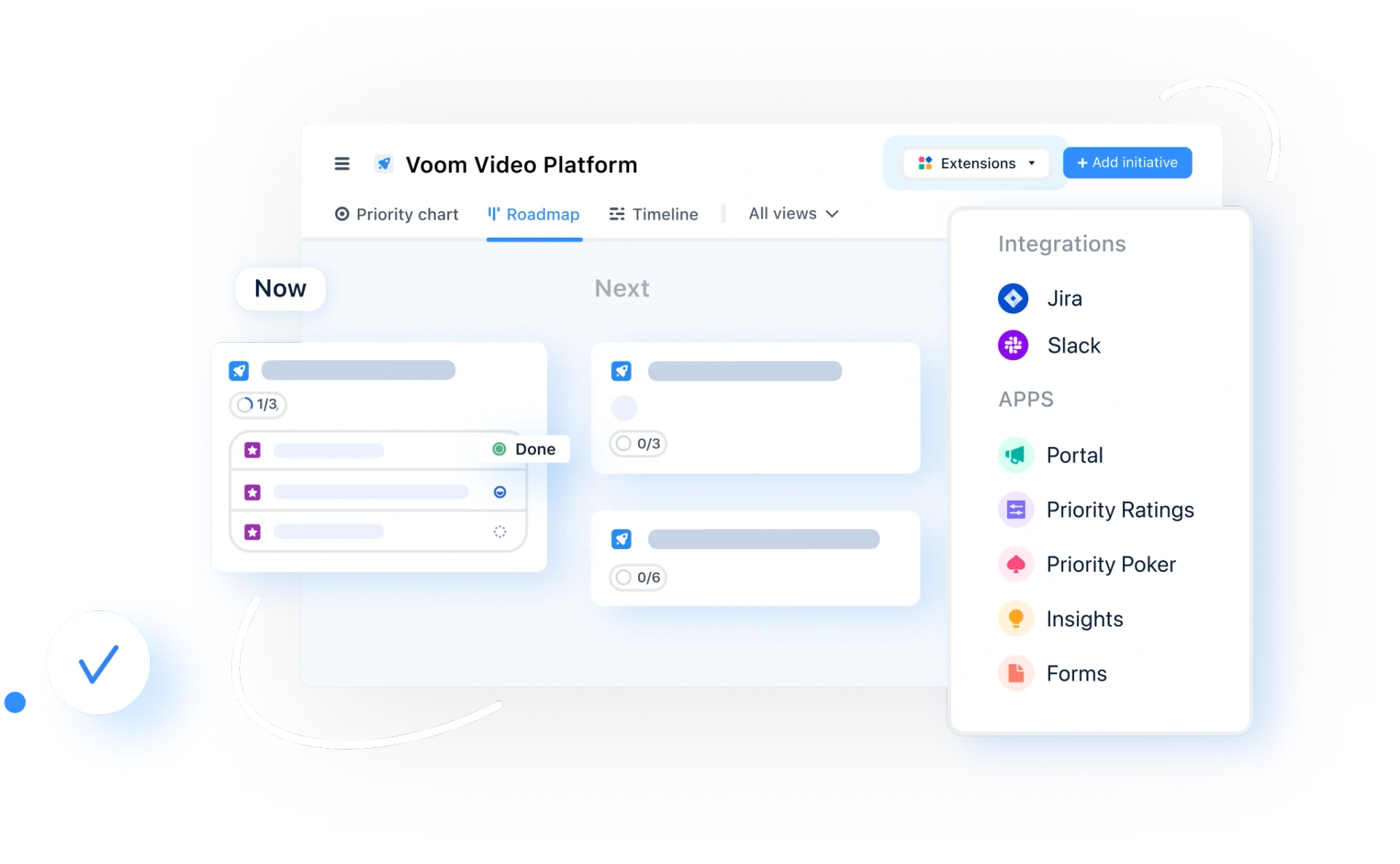
Sometimes, being a product leader can feel like nothing so much as “managing the chaos,” says Emma van Dijkum. Product management tools like airfocus can have a powerful impact in bringing some order to that chaos, but you still need to have the knowledge and confidence to use them correctly.
“That problem-solving mindset you develop early on as a product person,” giving one the ability to face the chaos without panicking is just one of the attributes Emma has spotted in the best product leaders.
Emma has worked in several senior product management roles, helping to create unicorns at Funding Circle and Multiverse. She has also clocked hundreds of hours as a Product Leadership coach – trusted by leaders at a wide range of companies like Google, Tide, Ravio, and Lloyds Banking Group. This combination gives her a unique perspective, as someone who understands the industry from the inside but can also step back and observe trends and themes.
So, what are the universal challenges Emma has observed? And how do you overcome them?
1. It all comes down to interpersonal skills
“Some of my clients come to me with strategy docs and vision docs,” explains Emma, “but most of them bring something interpersonal they need to work through.”
Those interpersonal struggles often fall into one of three categories:
Managing underperforming team members, and tensions within your team;
Communicating effectively with a boss – a founder, a CEO – who maybe isn’t a product or tech person;
Wrangling your stakeholder group.
Being able to communicate effectively and manage tension across such diverse groups is challenging, but absolutely essential.

So to break out of deadlock and help maintain focus on the organization’s core vision or mission, effective product leaders hone their communication, leadership, translation and motivation skills. In other words, “your number one attribute is influencing.”
2. One size does not fit all, for organizations or individuals
One of the key lessons Emma has learned from working with everyone from startups to legacy corporations?
“There's no one way to do product. There are some really good principles in how you should approach it, but a lot of organizations are doing product differently.”
This diversity of approaches is also important on the individual level. What kind of organization is a good fit for you? And how do you envision your role?
“It's all about picking your hard. For some, that's building from scratch with no data, where you're wearing every hat. For others it's taming chaos where the impact is felt on people and results. Sometimes it's working with the best people in the world building products for millions, where there is no room for error. Figuring out which challenge you like solving best can unlock your happiness.”
In other words:

3. You need to be adopting AI – personally and in your organization
Over the past decade, Emma has observed several changes in the industry as a whole, with one of the most profound being the development and increased adoption of AI in product management.

One of the specific threads Emma pulls out is how AI has the potential to change the structure of organizations – and in some cases, already is. She’s started to see a move toward smaller teams, and toward more role blending.
“Right now, I think there's still a need and a desire for specialism. And certainly, people are naturally better inclined to do certain things. But with AI augmentation, there's a lot of other opportunity.”
“It’s interesting to think about how that plays out,” she continues. “Consider a team with a designer, an engineer, and a product person where they can kind of all do each other's jobs. Do you lose something by removing some level of specialization there? And if so, is that better than ending up with one-person specialist ‘teams’ who run a bunch of agents to do things for them?”
You don’t need to have answers to these questions just yet. But one thing is clear: if you want your organization to be prepared for the future, you need to be thinking about AI.
“There's such a spectrum of where people are in their journeys with AI,” says Emma. “For anyone who's feeling behind or feeling underconfident or feeling like they're not keeping up, the reality is this: if you're even thinking about that, you're probably ahead of things.”
4. A lack of transparency is a major factor in eroding trust
“One of the biggest causes of breakdowns in trust is people not being able to see what’s going on,” Emma explains.
So how do you ensure that the relevant information is available to people? By developing your interpersonal skills, adjusting your strategy to actually fit your people and your organization, and leveraging the technology at your disposal.
There are several tools built into airfocus, like AI-driven product roadmapping and cross-team visibility, that help address these issues.

In other words, the best product leaders understand the benefits of a great tool. But they also put in the time to consider how to use it, and build the skills they need to make the most of it.
Emma-Lily Pendleton

Read also



Create effective product strategy

Experience the new way of doing product management




